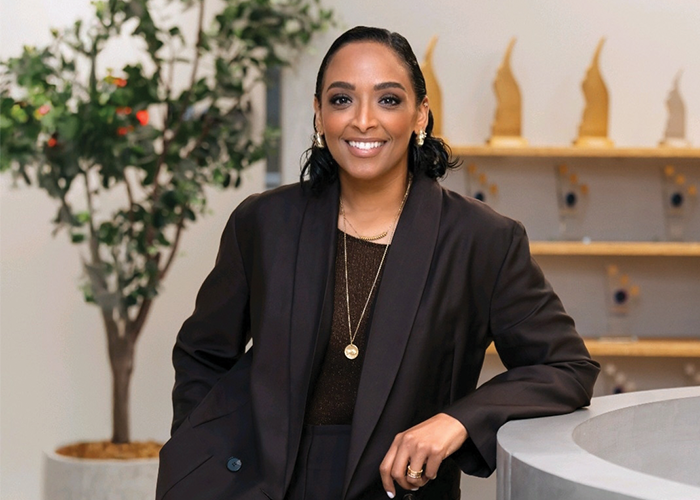
As we reach the midpoint of the ‘Raging 20s’, this decade is marked by intensity – whether in emotions, conflicts, or global challenges. Our agency’s Word of the Year, ‘Rage’, reflects the widespread sentiment shaping societal debates and individual mindsets.
Polarisation has become a defining trait, influencing politics, consumer behaviour, public health debates, and social dynamics. Amid this division, brands have a unique opportunity to lead by fostering dialogue and promoting civility.
Connecting during crises: the rise of consumer-driven activism
In today’s era of overlapping crises, the role of corporate communicators has transformed significantly. Managing one crisis at a time is no longer feasible; brands now face multiple, complex challenges across diverse markets.
Events such as the Russia-Ukraine war and the Gaza conflict highlight the concept of a permacrisis – ongoing global upheaval. Ignoring these issues is not an option, as 75 per cent of Saudi consumers report boycotting products linked to political issues, reflecting strong consumer-driven activism.
To thrive, brands must shift from reactive crisis management to proactive, purpose-driven strategies. HAVAS Red’s five Ps – platform, process, position, perspective and plan – offer a framework for authentic initiatives. Silence is no longer viable in a region where consumers demand visible, actionable change. Brands must acknowledge concerns and implement internal adjustments that reflect their values, fostering trust and accountability.
Read more predictions for 2025 from industry leaders here.
Partner selection is equally vital. Thoughtful collaborations ensure value alignment and strengthen credibility. Communicators play a key role in guiding brands to remain transparent, responsive and aligned with empowered, discerning consumers. Success lies in purposeful, strategic action.
Brands connecting through belonging: the power of hyper-personalised communities
The power of niche communities is reshaping brand engagement. As traditional media shrinks and mainstream platforms overflow, audiences seek hyper-personalised spaces for curated, authentic content. These online communities – such as newsletters and podcasts – offer exactly that. Brands are moving away from mainstream noise to foster belonging in focused spaces. Success lies in understanding audiences, finding their communities and creating relevant, resonant content. Generic messaging doesn’t work here; relevance and thoughtful audience segmentation are crucial.
‘‘Brands that succeed will act with purpose, empathy and conviction.’’
Virgin Mobile UAE’s Made For You campaign tailored content to audience needs, while Spotify’s Fresh Finds Saudi nurtures regional talent and connects authentically with music lovers. Brands prioritising relevance and authenticity thrive by becoming part of the conversation, not just being seen.
Connecting through emotion: the role of authentic storytelling for brands
As the world grows increasingly inundated with AI and tech-driven solutions, a counter-trend is emerging: the demand for authentic, human-centred, emotionally rich storytelling. People are quick to tune out generic, machine-generated noise, seeking instead narratives that offer genuine connection and purpose.
Now is the time to put human emotion back at the heart of communications – not just the sentimental kind, but the kind that fuels desire for products and services with a tangible human touch.
This is not a fleeting trend but a long-term shift. Brands that foster emotional connections today will enjoy lasting loyalty into the 2030s. A striking example is adidas’ Adizero Desert Runner collection, launched alongside the UAE’s first anamorphic art piece – a breathtaking 100-meter tribute to the modern runner’s spirit.
Created by American artist David Popa in Sharjah’s Al Madam area, the piece celebrates the desert’s infinite potential and proves human creativity still outshines AI’s tricks. Many mistook it for algorithmic art, but its human craftsmanship is precisely what made it unforgettable. In a world craving authenticity, these emotionally charged experiences leave the deepest impact.
Connecting through sound: music as a catalyst for brand identity
In an era dominated by visual content, sound is emerging as a powerful tool for brands seeking deeper connections with their audiences. Sonic marketing is no longer a fleeting trend – it’s an essential strategy redefining engagement.
Innovative brands are using sound to rise above visual clutter, crafting sonic identities that resonate emotionally and leave lasting impressions. From mnemonics and brand anthems to trending social sounds and bespoke sonic content libraries, sound is rewriting the rules of engagement, unlocking creativity and amplifying brand narratives.
A powerful example is Pampers’ Lullabies for Preemie Babies & Parents, a heartfelt reimagining of nursery rhymes tailored to the journey of premature babies. Available as a book and streaming on platforms such as Spotify and Anghami, it offers comfort while reinforcing the brand’s ethos.
As we move into 2025, sound’s role in brand marketing will expand further, driving awareness, virality and engagement in ways visuals cannot. Influencer-led music activations and immersive soundscapes will redefine how brands connect, proving that the future of marketing doesn’t just look good – it sounds even better.
As we move deeper into the ‘Raging 20s’, the challenges of polarisation, emotional disconnect and societal upheaval present both risks and opportunities for brands. Those willing to step up will not only remain relevant but also lead the way in reshaping how we connect and engage. In this era of change, the brands that succeed won’t just listen – they’ll act with purpose, empathy and conviction.
By Dana Tahir, Managing Director, Havas Red Middle East









